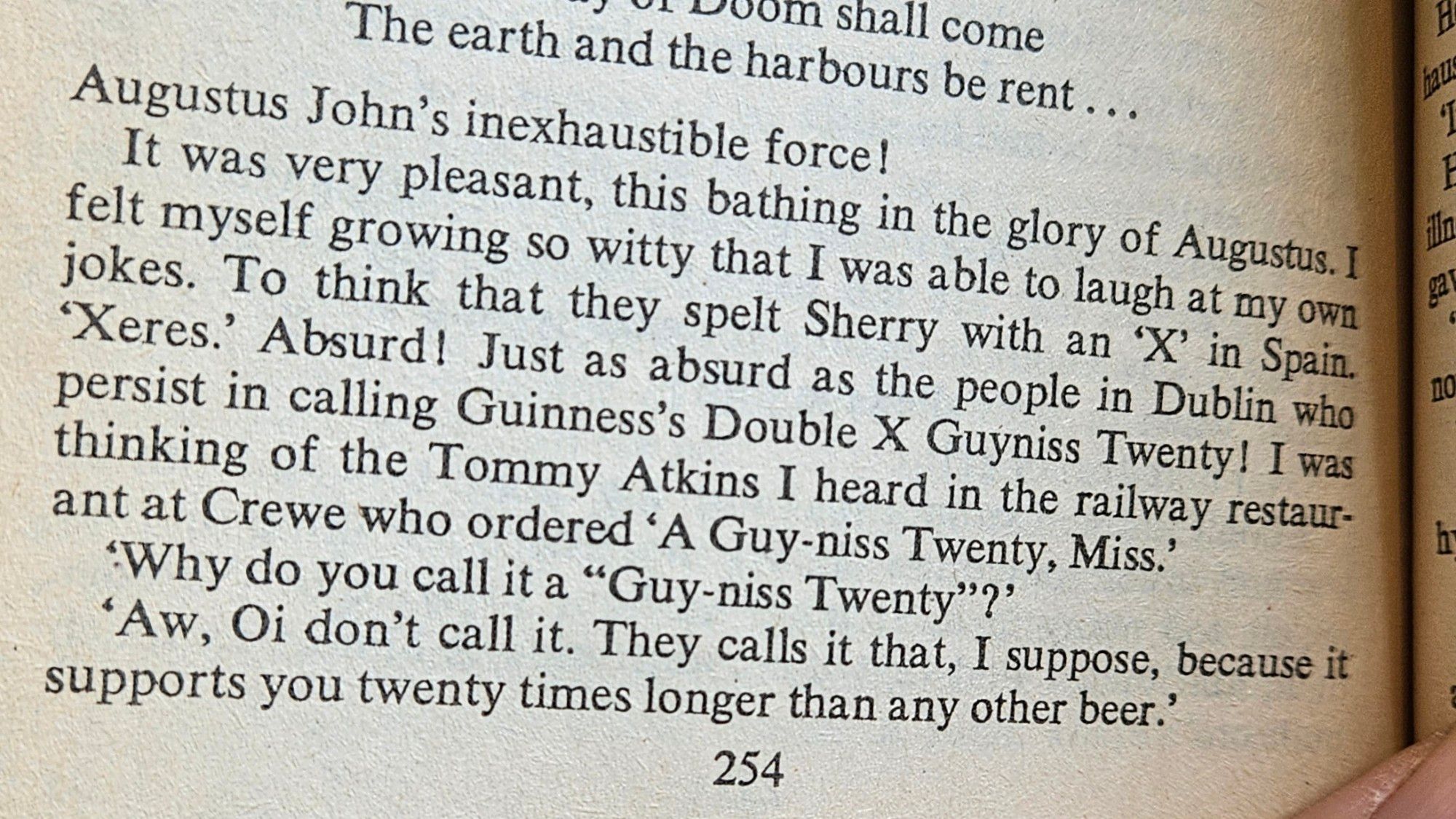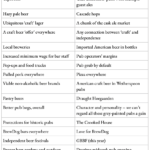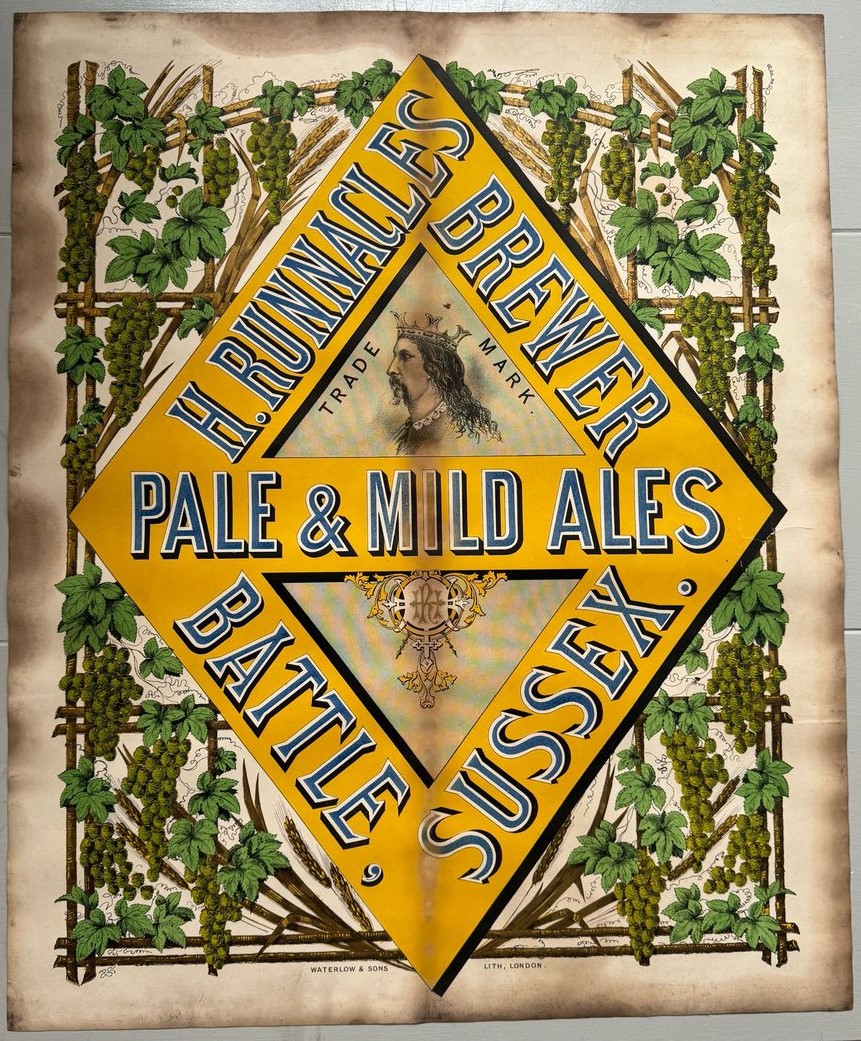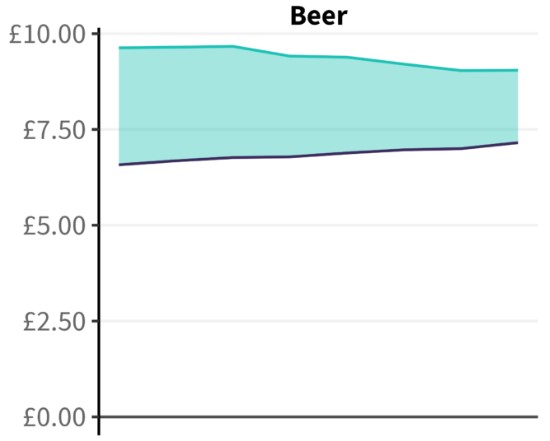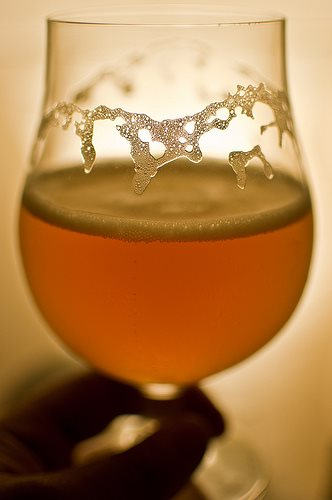 No throngs showed up apparently. It was even fairly quiet. But that thing in the sky was up there with the most amazeballs things I’ve ever seen. Certainly that I’ve seen from the backyard. As illustrated with a far better camera than the one that tried to capture my view of my new pal and master Sauron, via our actual eyeballs we could see two solar flares clear as day… except it wasn’t day… yet it was. We may have seen the out of focus lighting effect just for a moment and the seagulls had a pretty hard time of it, swirling overhead all through totality. Here’s a video or two of the shadow of the moon passing across our fair city by the lake which really gives the sense of how there wasn’t anything like dusk, just diminishing light – whammo – dark and back to a return to light. See you all in 2399 AD… or whenever the next one is. Back to your regularly scheduled gardening notes next week.
No throngs showed up apparently. It was even fairly quiet. But that thing in the sky was up there with the most amazeballs things I’ve ever seen. Certainly that I’ve seen from the backyard. As illustrated with a far better camera than the one that tried to capture my view of my new pal and master Sauron, via our actual eyeballs we could see two solar flares clear as day… except it wasn’t day… yet it was. We may have seen the out of focus lighting effect just for a moment and the seagulls had a pretty hard time of it, swirling overhead all through totality. Here’s a video or two of the shadow of the moon passing across our fair city by the lake which really gives the sense of how there wasn’t anything like dusk, just diminishing light – whammo – dark and back to a return to light. See you all in 2399 AD… or whenever the next one is. Back to your regularly scheduled gardening notes next week.
Beer? Beer! Let’s go!! In all the grim news shared about the effect of Brexit on the UK brewing industry, this bit of a fact in an article in The Guardian is quite telling on the actual effect of the departure on the UK economy despite other indicators:
This, industry figures said, ignores the wider burden on brewers, including Britain’s departure from the EU, which has brought with it administrative hurdles that have added to the cost of importing ingredients and all but wiped out opportunities for export. At Charles Faram, getting British hops into Europe has become more complicated, at the expense of British jobs. Corbett said: “We’ve set up a company in Poland to facilitate that, shipping in bulk and distributing to the EU. We’re employing people in Poland to do the work we used to do here.”
Note: by “the work we used to do here” Corbett may mean “the work they used to do here.” That’s a bit amazeballs, too. The company followed the displaced workforce. Speaking of unsupportable policy decisions, I was unaware (given the constant flow of annoncements about beerfests at every second UK street corner) that some beer fests are actually are refused permission, like this one which faced a litany of objections* according to this BBC report:
Greater Manchester Police and council licensing officers objected to the Craft Beer Festival going ahead… The force believed there was a risk of “traffic chaos”, which organisers said would be prevented by asking people not to use their cars to get there. They also objected to the amount of toilets available – 25 toilet facilities for 460 ticket holders – which they thought could lead to public urination… PC Alan Isherwood said their biggest fear was how overcrowding would be “dealt with”… Licensing officers added their worry over “three days of noise nuisance” for residents with “the nearest property only 230ft (70m) away”…
Far more agreeably and right after last Thursday’s deadline to send these news notes to the press, Boak and Bailey posted a really entertaining collection of pub vignettes from their recent reading, like the voices of Welsh miners singing or the case of a pub that stradled a county line:
Some years ago the Wortham constable was about to arrest a man who had gone to earth in the inn after a poaching or similar minor offence. As it happened the wrong-doer was in the Wortham part of the house when the constable approached; but receiving warning he quickly slipped into the bar on the Burgate side, thus putting himself outside the constable’s jurisdiction.
In the latest science news update from under the microscope, Lars gave us the heads up over the weekend that a new study from Canada’s Escarpment Labs shows that the farmhouse yeast he has been stufying forms one big and separate family of yeast titled rather generally as “European farmhouse yeast” as Lars summarizes:
The big finding is that group you see in the upper middle: a large group of farmhouse yeasts all next to each other. Yeasts from the kveik, gong, and berm areas as well as the Baltic all group right next to each other, with nothing else in between. The conclusion is that European farmhouse yeast is a separate family of yeast. Farmhouse yeast really is a separate type of yeast. And that family spans Norway, Latvia, and Lithuania, at least. I’ve been using the term “farmhouse yeast” for many years now, and now we learn that it’s not just a functional category (like bread yeast, or wine yeast), but it’s also a genetic family, a type of yeast.
For the double, announced speaker Lars has also shared some information on the prospects of the August 2024 Historic Brew Con being planned in Manchester by sharing this post from BeerNouveau:
Apart from having to postpone because we lost our venue, twice, and then the whole COVID thing, everything has been pretty smooth so far. Except ticket sales. Tickets have been on sale now for a couple of months and we haven’t sold enough to cover costs. A lot of people have said that they’ll be getting tickets, and if everyone who said they would did, then we’d likely be fine. But I can tell you now, if we don’t sell enough tickets in the next five weeks we’re going to have to cancel the event. There would still be eight or nine weeks before it went ahead, but there’s non-refundable deposits to pay, accommodation and travel to arrange, and a whole load of other costs that we have to stump up for before the conference starts.
I am not sure if there is a live feed option being offered but I had reached out a few months about about submitting papers, something I like as an option with an academic gathering. I did not hear back.
Slightly to the left on the map of the British Isles, Katie in her wonderful newsletter The Gulp shared an excellent glimpse of the ecosystem abord a ferry to the Isle of Man with particular stylish attention to its wee bar:
The bar on board the Manxman truly believes you are on a cruise. It gestures to the bar stools around a mood-lit console table, and wonders why you are not wearing a cocktail dress. The seating is a realistic shade of leather. Take in the atmosphere, make yourself comfortable. Prepare to disembark in an hour or two.
Here’s a thing I did not know. The Masters golf tournament has it’s own beer – and there isn’t much else known about it:
Crow’s Nest is a proprietary blend brewed exclusively for the Masters and not even available during the regular club season (which makes it that much cooler). It’s light, refreshing and tastes good, especially for parched golf fans wanting to fuel up after hiking up and down Amen Corner. It’s $5 and comes in a 20-ounce green commemorative cup, complete with italic Crow’s Nest text sandwiched between graphics of the tournament logo and the other Crow’s Nest (the one amateurs bunk in above the clubhouse). The brew is such a star, it even has its own shirt in the Masters Golf Shop. You think the domestic beer can claim that? Please.
Staying in the US of A, it’s been a difficult patch for the former beer focused firm, Boston Beer Co. according to one bot**:
Boston Beer Co’s revenue growth over a period of 3 months has faced challenges. As of 31 December, 2023, the company experienced a revenue decline of approximately -12.02%. This indicates a decrease in the company’s top-line earnings. When compared to others in the Consumer Staples sector, the company faces challenges, achieving a growth rate lower than the average among peers.
 Speaking of stats, there were a number interesting graphs in the recent edition of Doug Veliky’s Beer Crunchers newsletter – a discussion about how beer trade stats are gathered. This one table in particular caught my eye. US beer sectors year to date 2023 v 2024. Craft down. Significantly. Now less craft sold off premises than that excellent category “domestic below premium” which includes such Hamms, Keystone Light and – much to my surprise – Miller High Life which is entirely above the below… if you know what I mean.
Speaking of stats, there were a number interesting graphs in the recent edition of Doug Veliky’s Beer Crunchers newsletter – a discussion about how beer trade stats are gathered. This one table in particular caught my eye. US beer sectors year to date 2023 v 2024. Craft down. Significantly. Now less craft sold off premises than that excellent category “domestic below premium” which includes such Hamms, Keystone Light and – much to my surprise – Miller High Life which is entirely above the below… if you know what I mean.
Great piece in Pellicle by David Nilsen on the revival of Narragansett of Rhode Island but not quite sure on the history of their porter. If their brewer Lee Lord started homebrewing in 2011 and…
When the Providence Historical Society reached out to Lee shortly after she started and wanted to brew a collaboration beer, she decided to revive the brand’s Porter with a new—well, old—recipe. She used a recipe discovered by British beer historian Ron Pattinson based on an 1822 Porter; nearly half the grist is brown malt, and no black malt is used at all.
… then how did Lew and I gleefully drink their Porter no later than late 2009 and early 2010*** repectively? Ron. It’s got to be Ron who can explain what’s going on.
Speaking of revivals, GBH has an interesting story by Fred Garratt-Stanley of an English regional brewery, Lacons of Great Yarmouth, that thought ahead and stored its yeast:
“Securing the rights was a complex process that took two or three years,” says Carver, speaking to me over the phone. “Once we did, we went to the yeast bank and asked for the deposits of our yeast from 1956, of which there were eight: five top-fermentation yeasts and three bottom-fermentation yeasts.” Reviving these historic strains wasn’t simple, though. “Strains frozen in the 1950s have now been dormant for almost 75 years, so we have to revive them,” says Nueno-Palop. “Also, because many of the original depositors are not alive anymore, [breweries] need to acquire the rights. With Lacons, they had the original documentation pointing them toward the right NCYC strains … it was interesting that they had documented everything because this is very important for replicating recipes.”
Finally, it was interesting to note this comment on Twex from Jessica Mason:
As the end of the week nears, I look forward to a selection of men notifying us all of their ultimate line-up of most worthy beer news. Painstakingly collated into a list of what truly is best for everyone to read. Like they wrote it all. Can’t bloody wait.
As as far as I know, I get roundups from at least, yes, Katie Mather of The Gulp but also Jessica B. of Boak & Bailey and Stephanie Grant of The Share as well as I believe a few other women on recommended beery reading so I am pretty sure this corner of the hobby isn’t a chromozonal exclusive. That being said, good to have a sense of humour about being both the readers and the writers with these sorts of Nobel Prize ineligible topics. We hold each other up. As always, bring back RSBS so we wouldn’t have to rely on others!
Enough!! We roll the credits… well, the credits, the stats the recommends and the footnotes and the many ways to find good reading about beer and similar stuff via any number of social media and other forms of comms connections. This week’s update on my own emotional rankings? Facebook still in first (given especially as it is focused on my 300 closest friends and family) then we have BlueSky (up one to 126) rising up to maybe… probably… likely pass Mastodon (up three to 917) in value… then the seemingly doomed trashy Twex (minus 1 to 4,467) hovering somewhere above or around my largely ignored Instagram (down two to 161), with sorta unexpectly crap Threads (43) and not at all unexpectedly bad Substack Notes (1) really dragging up the rear – and that deservedly dormant Patreon presence of mine just sitting there. Fear not!
Want to keep up with the news before next Thursday? Check out Boak and Bailey every Saturday and Stan the very next Monday upon which he decides to show up at the office. Look at me – I forgot to link to Lew’s podcast. Fixed. Get your emailed issue of Episodes of my Pub Life by this year’s model citizen David Jesudason on the odd Fridays. And Phil Mellows is at the BritishBeerBreaks. Once a month, Will Hawkes issues his London Beer City newsletter and do sign up for Katie’s now revitalised and wonderful newsletter, The Gulp, too. Ben’s Beer and Badword is back with all the sweary Mary he can think of! And check out the Atlantic Canada Beer Blog‘s weekly roundup. There is new reading at The Glass which is going back to being a blog in this weeks best medium as message news. Any more? Yes! Check to see the highly recommended Beer Ladies Podcast. That’s quite good. And I listened to the BOAS podcast bro-ly interview of Justin from Matron. And the long standing Beervana podcast . Plus We Are Beer People. There is the Boys Are From Märzen podcast too and Ontario’s own A Quick Beer. There is more from DaftAboutCraft‘s podcast, too. All About Beer has introduced a few podcasts… but some may be losing steam. And there’s also The Perfect Pour. Plus follow the venerable Full Pint podcast. And the Craft Beer Channel on Youtube and remember BeerEdge, too, and The Moon Under Water… if you have $10 a month for this sort of thing… I don’t. Pete Brown’s costs a fifth of that. There was also the Beer O’clock Show but that was gone after a ten year run but returned renewed and here is the link! Errr… nope, it is gone again.
*One comment in the BBC report caught my eye: “… not to be confused with Didsbury Beer Festival, which has been held annually for 11 years at St Catherine’s Community Centre.” Is there some sort of tension between the Didsbury Beer Festival and the Didsbury Craft Beer Festival? Must be very civil peeing practices at the old DBF if the DCBF is called out on that particular fear. Just hope that there is none of that thimping thumping beat that neighbours complain about eminating from St Lawrence Church of York.
**Note: “This article was generated by Benzinga’s automated content engine and reviewed by an editor” so take this situation with a grain of salt.
***Shameless mooch that I was back then, the emails flew back and forth and the press release from November 20, 2009 read: “Originally called Narragansett Dark, ‘Gansett’s Porter craft brew first premiered in 1916. ‘Gansett still retains their original recipe, offering the same great-tasting Porter winter brew today. ‘Gansett Brewmaster, Sean Larkin offers some tasting notes on the brew: “We produce the Porter using summit hops, black malt, pale malt, roasted barley and ale yeast. It is then dry hopped with Amarillo hops, creating a deliciously mild chocolate flavor with just a hint of smokiness.” The specialty brew is 5.4% alcohol by volume with 22 International Bittering Units. Narragansett Porter is brewed in small batches at Trinity Brew House in Providence, Rhode Island and Cottrell Brewery in Pawcatuck, Connecticut.“


